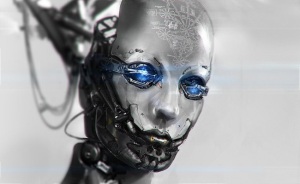You can find our presentation here on Simians, Cyborgs and Women:
By Sarah Camp and Sarah Carterhttps://drive.google.com/a/odu.edu/file/d/0B9o4Eqsm3C2DVnZ0d3loWndTOW8/view
Content:
- Harraway composes essays that formulate her new theory of social feminism.
- This theory incorporates elements of biology, primate studies, genetics and science fiction to establish a review of the past and forecast into the future of society.
key terms/concepts w/definitions and/or descriptions
- Representation vs. Simulation
- Organism vs. Biotic Component
- Physiology vs. Communications Engineering
- Eugenics vs. Population Control
- Sex vs. Genetic Engineering
- Cyborg- “Ironic political myth faithful to feminism, socialism and materialism”
- Socialist Feminism
- Reconfiguration of Nature?
We discuss Old v. New Media and Digital Media.


Reading and listening through your presentation, I couldn’t help but to place it alongside my own canonical text, How We Became Posthuman. Both seem to be based in the three “I’s” contested in the boundary space between technology and humanity: identity, interface, and ideology. (The difference being, I would guess, in just terms between our texts: Haraway uses ‘cyborgs’ and Hayles prefers ‘posthuman’.)
That was the main takeaway for me too: that the re-inscribing of materialism is center to understanding the relationship between identity, its expression, and how the ‘cyborg’ can rest in that middle space between person and machine. I really liked the quoting of Schwartz and the phrase of “embodied situational knowledge” (a /very/ Hayles phrasing) especially in this realization. Within How We Became Posthuman, Hayles spends a great deal of space making the case that we are losing embodiment (with part of the blame on science fiction tropes) and in remembering ourselves, we need to position bodies as important again — something I feel Haraway would agree with.